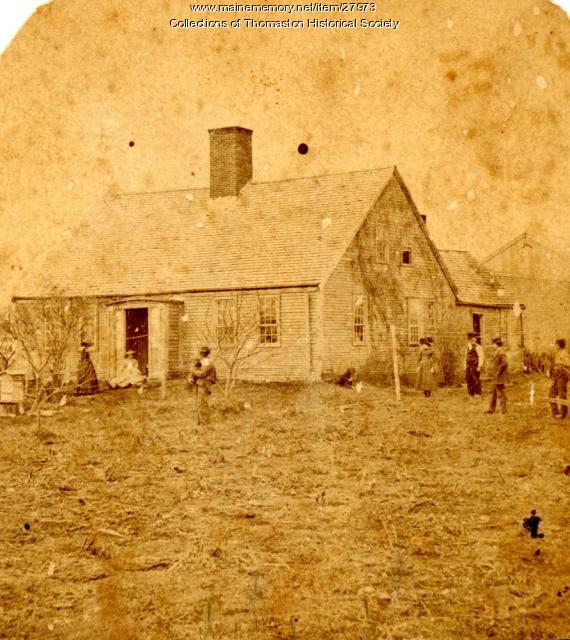Keywords: oral
Item 54439
Bangor and Aroostook Railroad excursions, 1952
Contributed by: Presque Isle Historical Society Date: circa 1952 Location: Presque Isle; Boston Media: MP3
Item 54441
Building changes on the corner of Main and State, Presque Isle, since 1940
Contributed by: Presque Isle Historical Society Date: 1940–2000 Location: Presque Isle Media: MP3
Exhibit
MY ISLAND HOME: Verlie Colby Greenleaf of Westport Island
Verlie Greenleaf (1891-1992) bore witness to over a century of Westport Island's history. Many changes occurred during Verlie's 100-year life. Verlie Greenleaf donated photographs, personal notes, and sat for an interview in 1987, all part of the Westport Island History Committee's collection. Her words frame this exhibition, providing a first-person account of her life.
Exhibit
The Irish on the Docks of Portland
Many of the dockworkers -- longshoremen -- in Portland were Irish or of Irish descent. The Irish language was spoken on the docks and Irish traditions followed, including that of giving nicknames to the workers, many of whose given names were similar.
Site Page
Maine Folklife Center, University of Maine
View collections, facts, and contact information for this Contributing Partner.
Site Page
Swan's Island: Six miles east of ordinary - About Us
"… expanded our collection, and recorded oral histories to save our island memories. To see some of our work, please visit…"
Story
My career as a wildlife biologist
by Ron Joseph
Rural Maine provided the foundation of a rewarding career as a wildlife biologist.
Story
Share your COVID-19 story for future generations
by Steve Bromage and Jamie Rice, Maine Historical Society
Learn how you can share your stories on Maine Memory Network
Lesson Plan
Longfellow's Ripple Effect: Journaling With the Poet - "The Song of Hiawatha"
Grade Level: 6-8, 9-12
Content Area: English Language Arts, Social Studies
This lesson is part of a series of six lesson plans that will give students the opportunity to become familiar with the works of Longfellow while reflecting upon how his works speak to their own experiences.
Lesson Plan
Wabanaki Studies: Stewarding Natural Resources
Grade Level: 3-5
Content Area: Science & Engineering, Social Studies
This lesson plan will introduce elementary-grade students to the concepts and importance of Traditional Ecological Knowledge (TEK) and Indigenous Knowledge (IK), taught and understood through oral history to generations of Wabanaki people. Students will engage in discussions about how humans can be stewards of the local ecosystem, and how non-Native Maine citizens can listen to, learn from, and amplify the voices of Wabanaki neighbors to assist in the future of a sustainable environment. Students will learn about Wabanaki artists, teachers, and leaders from the past and present to help contextualize the concepts and ideas in this lesson, and learn about how Wabanaki youth are carrying tradition forward into the future.















